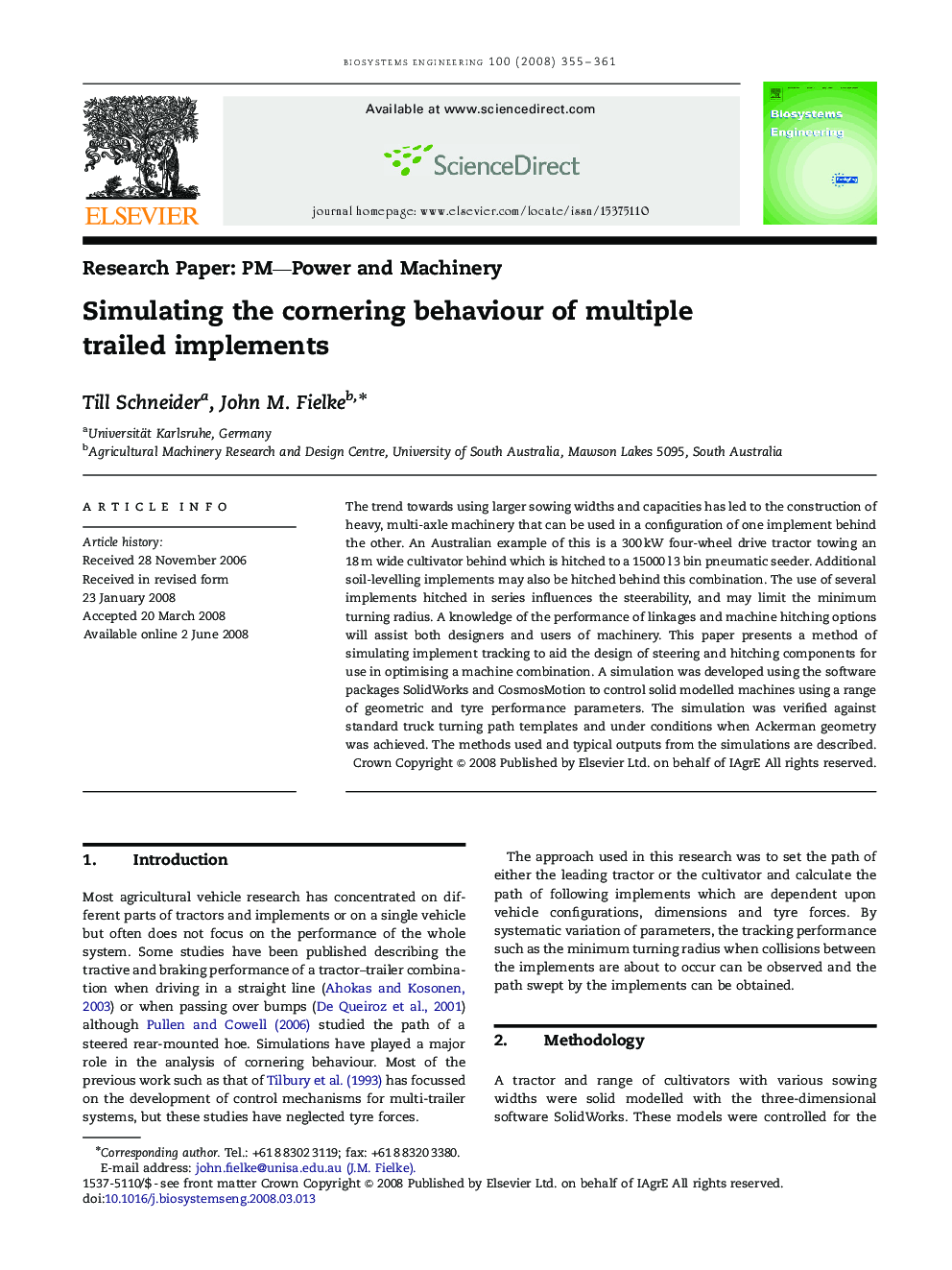| Article ID | Journal | Published Year | Pages | File Type |
|---|---|---|---|---|
| 1712285 | Biosystems Engineering | 2008 | 7 Pages |
Abstract
The trend towards using larger sowing widths and capacities has led to the construction of heavy, multi-axle machinery that can be used in a configuration of one implement behind the other. An Australian example of this is a 300Â kW four-wheel drive tractor towing an 18Â m wide cultivator behind which is hitched to a 15000Â l 3 bin pneumatic seeder. Additional soil-levelling implements may also be hitched behind this combination. The use of several implements hitched in series influences the steerability, and may limit the minimum turning radius. A knowledge of the performance of linkages and machine hitching options will assist both designers and users of machinery. This paper presents a method of simulating implement tracking to aid the design of steering and hitching components for use in optimising a machine combination. A simulation was developed using the software packages SolidWorks and CosmosMotion to control solid modelled machines using a range of geometric and tyre performance parameters. The simulation was verified against standard truck turning path templates and under conditions when Ackerman geometry was achieved. The methods used and typical outputs from the simulations are described.
Related Topics
Physical Sciences and Engineering
Engineering
Control and Systems Engineering
Authors
Till Schneider, John M. Fielke,
